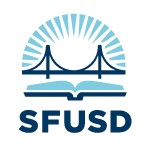
San Francisco Unified School District has ninth grade ethnic studies curriculum that teaches gender is fluid; lesson on white supremacy proposes creating a country for black people in the southern states called “Republic of New Afrika”
Incidents
The San Francisco Unified School District has an ethnic studies curriculum posted online for ninth grade students. Intended outcomes for students in the curriculum include “pursuit of justice and equity,” “working towards greater inclusivity,” and “recognizing intersectionality.” Students in this curriculum learn that “oppression” is “ideological,” “institutional,” “interpersonal,” and “internalized.”
In the first lesson, students are taught that there is a dominant narrative “told by those who are in power,” which is recognized as the “official” history. The lesson states that this “is shaped by the ruling classes identities and interests (i.e., class, race, gender, religious, et al) and marginalizes and/or silences points of view not in line with its own.” The start of the lesson also includes a “Land Acknowledgment” for students to recognize and work “toward the healing of the generational trauma, theft and dispossession native peoples have faced and continue to face.”
The lesson also appears to attack Christopher Columbus and asks “what are the dominant narratives” about him. Students are asked for a “counter narrative.” Students are also asked to give a “counter narrative” for Thomas Jefferson.
The first lesson additionally includes the “Genderbread Person.” The “Genderbread Person” is an image often used in an attempt to teach students that gender exists on a spectrum. Students are taught the “difference between gender and sex,” “understanding pronouns,” and “using respectful language.” Students are then taught that sex is a label based on genitals while gender is a “set of expectations from society based on gender roles.” The lesson explains: “Just like sexuality, gender and gender identity are fluid, and exist on a spectrum.”
The second lesson teaches students to “critically examine our society, define power/privilege in concrete and tangible ways, and assess how nuanced expressions of power are maintained through various forms of oppression AND resistance: ideological, institutional, interpersonal, and internalized.” Students are shown the “Wheel of Power/Privilege” in this lesson that explains people are more privileged than others based on their race, religion, and sexual orientation.
The lesson then explains that “all liberation movements are rooted in the abolition of classism.” Students are additionally taught about “heterosexism” and asked: “How does drag queen story hour disrupt the cycle of heterosexism for young minds?” Students are asked to create a definition for “white male privilege” and told that it “has been created over many years through government policy.”
As an example of “ideological resistance,” students are taught to support the Black Lives Matter movement. The lesson states: “BLM is a decentralized political and social movement that seeks to highlight racism, discrimination, and racial inequality experienced by black people. Its primary concerns are incidents of police brutality and racially motivated violence against black people.” Despite the BLM riots in 2020, students are told that “ideological resistance centers love and humanity.”
The lesson teaches students about “white supremacy” while asking: “What boundaries are imposed by white supremacy in our daily lives?” A notable image in this section states: “Gender isn’t binary.” The lesson suggests the idea to students of creating a country called the “Republic of New Afrika” consisting of Louisiana, Mississippi, Alabama, Georgia, and South Carolina solely for “formerly enslaved African (new Afrikan people) on U.S. soil, in states where their ancestors were formerly enslaved.”
The third lesson is on the topic of “Cultural Hegemony and Counter Hegemony.” This lesson encourages students to create a podcast to expose issues they have learned in the ethnic studies curriculum.
The fourth lesson is on the topic of “transformations and change” and discusses social justice movements. In this lesson, students are taught the differences among “punitive justice,” “restorative justice,” and “transformative justice.” Examples of social justice movements shown in a positive manner are “The Black Panthers, “Black Liberation Army/Republic of New Afrika,” “Climate Justice,” and “Black Lives Matter.”
Another lesson is on the topic of “Queering Black History Month” where students “will be able to explore Queer Black History by reading, writing, and answering questions.” The goal is for students to examine “historical and contemporary Black Queers that have contributed to history.”
The district also has a document in the curriculum titled “Black Studies Infusion Lessons.” This document consists of smaller ethnic studies lessons for students. One lesson is titled “Black, Queer, and Resisting Oppression” that states “anti-queerness is a part of white supremacy.” This lesson further states: “A rigid understanding of gender, sex, and sexuality is a part of the imperialist, capitalist, white supremacist, binary thinking that oppresses Black thought, Black culture, and all of Blackness today.” Students are also asked: “What did our queer ancestors go through?”
Stay Informed
